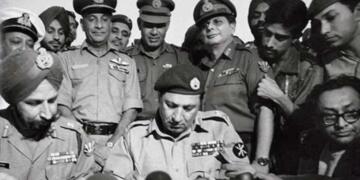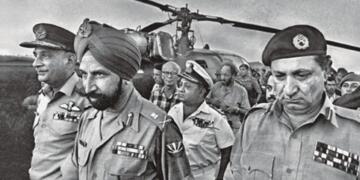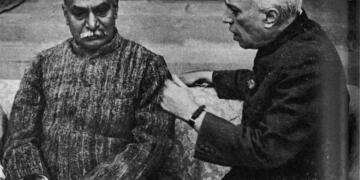India is at a crossroads in its strategic trajectory today. India, as the fifth-largest economy in the world and a regional power with international ambitions, has come a long way in space exploration, nuclear deterrence, and missile technology. Its space program, spearheaded by ISRO, has reached heights that have drawn international admiration, such as the Moon and Mars missions. The missile program, under DRDO, has developed a credible deterrent with indigenous capabilities. These achievements were made possible not only because of scientific brilliance but because they were treated as national missions, enjoying political backing at the highest level often directly supervised by the Prime Minister’s Office. In sharp contrast, India’s indigenous jet engine program despite being equally critical to national security has failed to reach maturity even after decades of effort. This chronic underperformance now demands a course correction. The jet engine development program must be brought under the direct watch of the PMO, just like the nuclear and space programs, if India is to ensure true self-reliance in aerospace and air warfare.
Jet engines are some of the most advanced machinery known to mankind. They use extreme thermodynamic cycles, utilize materials that can withstand temperatures of over 1,500°C, and require engineering precision at microscopic scales. Being able to design and build one’s own high-thrust, reliable jet engine is not a matter of prestige but one of imperative military autonomy. Jet engines determine the ability of fighter jets to supercruise, carry more payload, fly under the radar, or engage in high-altitude war theaters like Ladakh or Arunachal Pradesh. Without a domestically built engine, India remains strategically dependent on others not only to purchase new aircraft but also for spares, maintenance, and performance enhancement. Such dependence brings enormous vulnerabilities, especially in war when supply chains can be cut or politicized.
Recent tensions during Operation Sindoor, which followed a period of heightened cross-border hostilities with Pakistan, again revealed India’s limitations. While the Indian Air Force executed precision operations showcasing its combat readiness, but it was the Rafale Jets who took the lead of the Operation Sindoor to avenge Pahalgam Islamist attack. Such dependency is a negation of the Atmanirbhar Bharat vision that the Indian Prime Minister Narendra Modi saw. For missiles or satellites, India has achieved end-to-end self-reliance. The backbone of Indian power projection capability, fighter aircraft, still retains foreign engines. This capability gap must be filled at once.
The indigenous Kaveri engine program, launched by the DRDO’s Gas Turbine Research Establishment (GTRE) in the 1980s, was supposed to power the Light Combat Aircraft (LCA) Tejas. However, the project consistently underperformed and failed to meet thrust requirements. By the early 2000s, it was dropped from the LCA program, replaced by imported engines. This failure was not merely technical, it reflected deeper institutional inefficiencies, inconsistent funding, a lack of accountability, and the absence of high-level strategic oversight. Today, efforts are being made to revive the project under the banner of Kaveri 2.0, with approximately ₹2,500 crore allocated to DRDO for the program’s redevelopment. This version aims to deliver a 110 kN thrust-class engine that could potentially power future platforms like Tejas Mk2, the Twin Engine Deck-Based Fighter (TEDBF), and even India’s fifth-generation Advanced Medium Combat Aircraft (AMCA).
Yet, pouring money alone will not ensure success. Jet engine development requires continuity, centralized coordination, and long-term political will. It demands an ecosystem that combines DRDO’s research, HAL’s manufacturing experience, the private sector’s innovation, and academia’s cutting-edge material science. Currently, these players function in isolated silos with no central command. This is precisely where the PMO can and must intervene. As history shows, India’s space and missile programs succeeded only when they were declared missions of national importance and given uninterrupted political backing. Dr. Kalam’s Integrated Guided Missile Development Program (IGMDP) and Dr. Vikram Sarabhai’s space vision flourished not just due to science but due to strategic support from the highest office.
PMO-level supervision would bring several critical benefits to the jet engine program. First, it would elevate the program to a national mission status, ensuring continuity across political cycles and bureaucratic reshuffles. Second, it would enforce accountability and timeline-bound goals, a necessity in defense R&D, where decades-long delays have become the norm. Third, it would allow the PMO to directly negotiate and monitor international technology-sharing deals. India is currently in talks with the U.S. (GE), France (Safran), and the U.K. (Rolls-Royce) for potential joint ventures or technology transfers. Only top-level strategic negotiations can ensure that such deals move beyond screwdriver technology to real transfer of critical know-how like single-crystal turbine blades, cooling technologies, and high-temperature metallurgy.
Moreover, bringing the program under the PMO can fast-track the establishment of much-needed testing infrastructure, such as high-altitude test facilities and hot-section validation labs, which India currently lacks. It would also catalyze private sector involvement in areas like additive manufacturing, AI-enabled diagnostics, and precision casting. The model could mirror how ISRO engages with startups and academia to create a wider innovation ecosystem. Such a multi-stakeholder, mission-mode approach is possible only when guided by centralized national leadership.
India’s rise as a global power depends on eliminating critical technological dependencies. While the ability to launch a Mars orbiter or build an anti-satellite weapon is admirable, the inability to manufacture a world-class fighter engine continues to be a strategic embarrassment. India cannot become a true aerospace power if its jets fly on imported hearts. The Kaveri 2.0 initiative is a big opportunity for redemption. However, it is important that this initiative is led, evaluated, and spearheaded by the Prime Minister’s Office. Only then will India be able to gain propulsion independence and set the stage for an independent air force that can directly face emerging threats.































